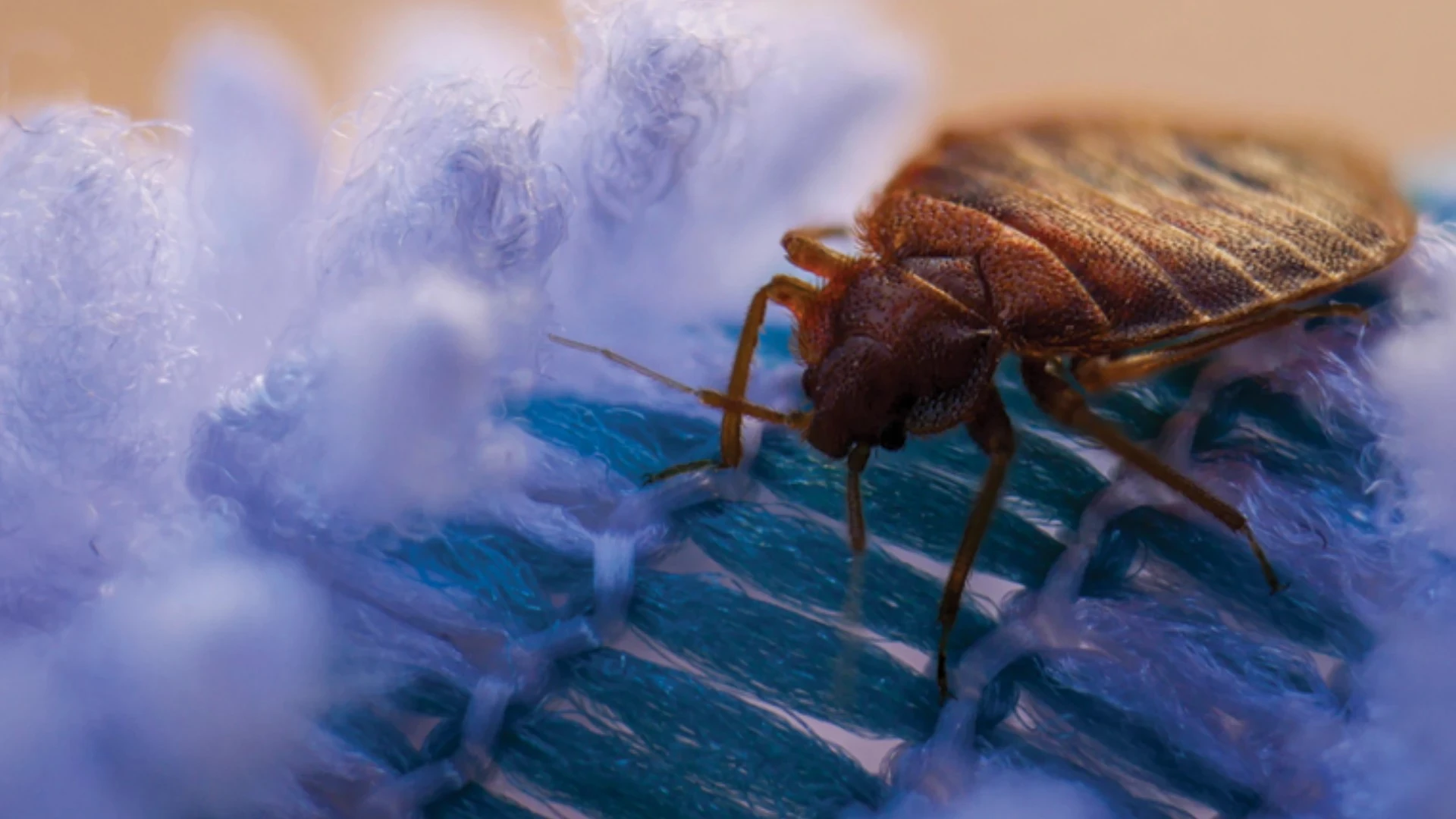This article appeared in the March 1999 issue of PCT Magazine.
Several bird control case studies reveal that PCOs need to be creative, conscientious and careful when trying to rid special accounts of birds.
Bird accounts vary throughout the country and everyone deals with troublesome birds in different ways. But, many times the sharing of information is helpful to others who are in similar circumstances. The following are several case studies of particularly difficult bird control accounts encountered by various PCOs. Although the solutions written about here were the ones used by these companies, there are other strategies that probably would have worked as equally well.
Problem No. 1
Starlings are roosting in Arizona ash trees within a quadrangle surrounded on all sides by historical three-story buildings. Access to the interior of the quadrangle is through a guarded gate. The quadrangle houses a zoo which contains a variety of free-roaming animals, e.g., guinea hens, peacocks, ducks, rabbits, deer, etc. Personnel who park in the quadrangle are complaining about bird droppings and paint damage to their cars.
Observations indicate that the birds are using the site as a roost and in the early evening were returning from their feeding sites. It is estimated that at least 1,000 starlings are roosting in this area.
Solution
The presence of free-roaming animals in the quadrangle area limited the options. Toxicants could not be used because of the risk of non-target animals eating treated bait. Consideration was given to the removal of trees, however, this was aesthetically unacceptable. To avoid further damage to cars, employees were advised not to park under the trees.
The trees were sprayed over a weekend with a tactile repellent. Although treatment was aided with a cherry picker lift, the highest areas of the trees could not be treated and the birds returned.
The next procedure was to thin the trees, modifying the roost and removing the protection afforded by the thicker growth. This had added value because these trees are susceptible to wind damage. After the thinning was completed, blanks and other noise-making devices were used to frighten the birds from the roosts. The harassment was continued for several days until the roost was abandoned.
Problem No. 2
Several dozen pigeons are nesting in louvered panels on the top two stories of a 13-story university hospital. There is concern that they represent a health threat to patients and that pigeon mites may work their way into the interior of the hospital. Though there is concern about killing the pigeons, a permanent solution is desired.
The site survey indicates that the hospital has a large flat roof area that periodically accumulates water and attracts the pigeons.
Solution
This is a very large complex of buildings which all have flattop roofs. The overall plan was to screen the louvers being used for nesting and roosting with bird netting. However, if this was done without removing the pigeons there were ample ledges for them to relocate.
Because the hospital complex is a very visible and heavily traveled area, frightening agents and baits could not be used. Trapping was determined to be the most efficient and least controversial way to remove the pigeons. Bob traps were placed on the roofs of several buildings after feeding sites were established. Because of the high temperatures in this area traps were checked daily. Trapped pigeons were transported to the country for release.
Once the resident population was reduced to acceptable numbers the louvers were netted. As a preventive measure metal spines were installed on ledges and the roof parapets to discourage roosting and nesting.
Problem No. 3
Management at a retirement home located in a country setting with acres of ground space and a pond is concerned about the growing population of geese. The geese continuously foul the sidewalks and areas where the residents spend time outdoors, creating unsanitary conditions, unsightly droppings and increased possibility of someone slipping.
Observations indicate that a resident flock of approximately 40 geese are involved; these numbers increase temporarily when other geese join them. Since the residents enjoy watching the geese, management does not want to eliminate them from the property, but they do want to keep them off the sidewalks.
Solution
Because the residents of the retirement home derived great pleasure from them management did not want to totally remove the geese from the area. Residents were informed that the geese should not be fed because of the problems with the increasing numbers of geese and their droppings. While this did not solve the problem it reduced feeding and the geese were not being enticed into the area as frequently.
To keep the geese off the sidewalks and public areas, decorative fences and ornamental plantings were placed around most of them. The grass areas immediately adjacent to these same areas were treated with methyl anthranilate. These procedures significantly reduced the problem associated with the droppings by confining most of their activity to open grassy areas and around the pond.
Problem No. 4
Sparrows are entering food storage warehouses and fouling food product containers with their droppings.
The site survey indicates that the warehouse has ground-level entryways that are used by forklifts to unload deliveries from semi-trailers outside. Because of the continuous traffic through the doors they are constantly left open. The resident sparrow population in the structures is less than 20 birds and there is just a normal population outside the warehouses. Nothing on the exterior seems to be contributing to the interior problem. Management wants the birds removed and measures taken to prevent a recurrence of the problem.
Solution
This problem involves two issues, removal of the sparrows and preventing entry. It was decided that shooting would be the most expeditious method of removing the sparrows in the warehouses. A high-powered air rifle was used because it posed little risk of structural damage. Shooting was done at night when there was just a skeleton work crew and the birds were less active. Because these are food storage warehouses toxic perches could not be used.
Prevention focused on outdoor sanitation, elimination of any materials that might attract the sparrows to the vicinity of the warehouses and exclusion. Management did not have plans or the financial resources to restructure the warehouse unloading system. Because the loading doors stood open most of the time, heavy plastic strips were hung from the top of the doorway to within several inches of the ground. They were installed in such a fashion that if they were held side to side, a complete seal would be formed. This system allowed the forklifts to carefully pass through the doorway. Damaged strips had to be periodically replaced. To frighten the birds, silver plastic tapes were hung near the entryways.
This approach significantly reduced the number of sparrows entering the warehouse.
Problem No. 5
A municipal building has a severe pigeon, starling and sparrow problem. Bird droppings are defacing the building, sidewalks and windows and are falling on pedestrians. Employees are concerned about potential health effects and complain of being bitten by bird mites. There is a large municipal park across the street. People in the park feed the pigeons and sparrows. There are non-target birds in the park. (This problem is adapted from the NPCA Bird Management Manual).
Management wants to clean up the problem, but avoid public confrontations over controlling the birds.
The site survey reveals the following:
- 30 pigeons nesting in an old unused cooling tower on the roof.
- 65 pigeons regularly loafing and roosting on the roof.
- 50 pigeons regularly loafing and roosting on the parking garage.
- 10 pigeons nesting in an old water tower in the parking garage.
- 50 starlings nesting in an ornamental strip that surrounds the building over the first floor.
- Variable number of starlings loafing in ornamental trees on two sides of the building.
- 100 starlings nesting inside the garage.
- 1,000 starlings roosting in the park.
- 80 sparrows nesting in ornamental window work and window vents.
- 40 sparrows in English ivy on one side of the building.
Most of the bird feeding occurs in the park. The park is heavily used at lunch by brown baggers. There is considerable activity in early evening. Garbage pick-up in the park is poor with an insufficient number of trash receptacles and resultant trash and food scattered throughout the park.
Solution
Eight pigeon traps were used on the roofs of the building. Traps were checked every two days, non-target birds released and pest birds destroyed. The space between the ornamentals strip on the first floor and the wall was netted. Office building window vents and air vents in the parking garage were covered with hardware cloth by pest control service personnel.
The old cooling tower and water tower were removed by the city. Sticky repellents were used on window ledges and other roosting sites. The ivy on the side of the building was thinned. Trees in front of the building and across the street in the park were trimmed.
The number of trash receptacles in the park was increased, frequency of pick-up was increased and overall cleanup of the park improved. To control ectoparasites and discourage nesting, existing nests were sprayed with a pesticide and then destroyed. Toxic perches were used inside the garage to kill those starlings and sparrows that were trapped inside after they were screened-out of the vents. Dead birds were removed daily. (Note: The manufacturer of Rid-A-Bird has voluntarily cancelled their registration of the product. The product can no longer be used by PCOs after October 1, 1999.)
Pigeons were baited with Avitrol on the building and garage roofs. Corn was used to prebait several sites until feeding patterns were established. Avitrol was exposed on a Saturday when the building was closed. The area was monitored throughout the weekend for dead birds. The program continued for five days.
After the populations were reduced to acceptable levels, the area was monitored on a monthly basis. Additional work was performed as necessary.
Both a press release and information fact sheets were prepared explaining the bird problem and treatment program, thereby preventing any public outrage.
The case studies featured in this article are from an upcoming bird management book by Dr. Richard Kramer.

Explore the March 1999 Issue
Check out more from this issue and find your next story to read.
Latest from Pest Control Technology
- Rentokil Terminix Expanded in Key Markets with 2024 Acquisitions
- In Memoriam: Joe Cavender
- Certus Acquires Green Wave Pest Solutions
- Liphatech Adds Alex Blahnik to Technical Team
- Do the Right Sting: Stinging Insect Identification, Management, and Safety
- VAGA's 8th Annual Veterans Thanksgiving Appreciation Dinner
- Clark's Blair Smith on the Response to Increased Dengue Fever Cases in Southern California
- WSDA, USDA Announce Eradication of Northern Giant Hornet from U.S.





